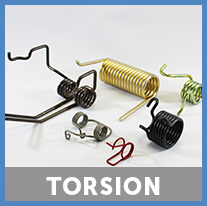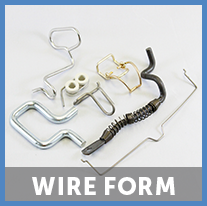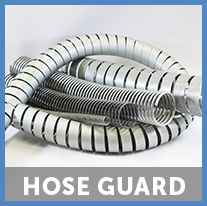When selecting a spring material, many factors come into play. Cost is usually a factor, as well as, tensile strength, quality, operating temperature, and corrosion resistance.
The most common spring materials are listed below:
| Wire Type | Usage |
|---|---|
| Hard Drawn ASTM A227 |
Usually the least expensive material. Hard Drawn is used for lower cost, lower stress springs, not subject to shock, high temperature, or cyclic loading. |
| Oil Tempered ASTM A 229 |
General purpose spring wire. Cold drawn, then quenched and tempered after drawing, in order to get the required tensile strength. The heat treatment process allows higher tensile strength than Hard Drawn in the larger wire sizes. The quench and temper also has the advantage of creating a very straight material. |
| Music Wire ASTM A 228 |
Cold drawn to create the tensile strength. High tensile and very high quality and consistency. Suitable for cyclic applications. |
| Chrome Silicon ASTM A 401 |
An alloy spring steel, heat treated after drawing to generate tensile strength. Very straight like Oil Tempered. High tensile strength and high quality material suitable for cyclic applications and higher temperatures and higher shock than Music Wire. Powdercoat or other non-electroplate coating should be used when there is a need for corrosion protection. Valve quality grade is available special order providing even better fatigue life. |
| 302/304 Stainless Steel ASTM A 313 |
Cold drawn stainless steel, general purpose corrosion and heat resistant. Magnetic in spring temper. |
| 17-7 PH Stainless Steel ASTM A 313 |
Cold drawn and precipitation hardened after fabrication. Higher tensile than 302 SS. General-purpose corrosion resistance. Slightly magnetic in spring temper. |






